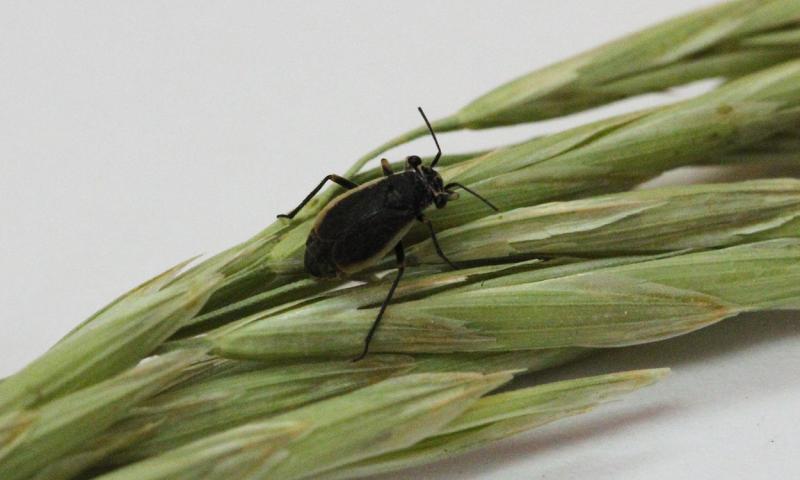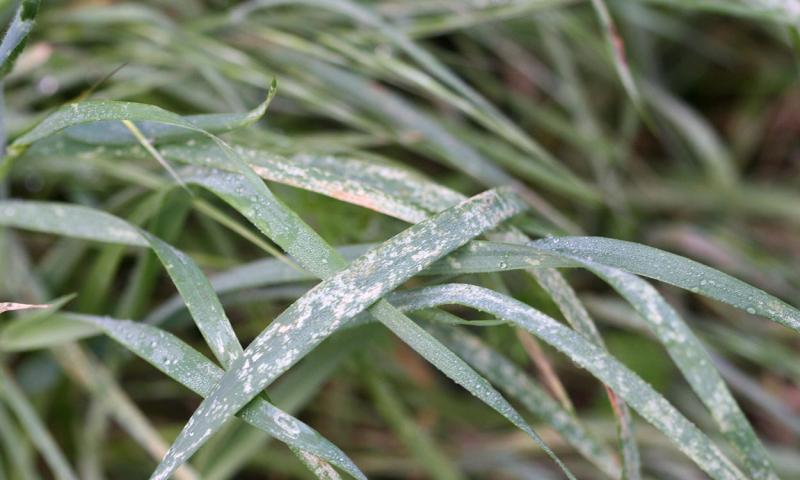
Written collaboratively by Patrick Wagner, Adam Varenhorst, Philip Rozeboom, and Brad McManus.
Originally Submitted: May 8, 2023
With the warm temperatures and green foliage comes insects, including some early-season pests. In central and western South Dakota, black grass bugs are a common spring pest of forage grasses. This native insect first appears in April to early May when grasses begin to emerge from dormancy. Black grass bugs feed on fresh, green growth, which can result in stunted plants and decreased forage quality. They cause the most damage when paired with drought conditions. Fortunately, this year’s spring snowstorms and rain events may allow grasses to tolerate some feeding damage. However, much of the state is still in some level of drought (Figure 1). It remains important to monitor black grass bug populations and prevent potential outbreaks from occurring.
Profile
Black grass bugs are small bugs that are either uniformly black, or black with tan margins along their sides (see Figure 2).

They are approximately one-quarter of an inch long and have large eyes that protrude from the sides of their head. Black grass bugs only have one generation per year. They overwinter as eggs and hatch out as soon as grass begins to green up in the spring. Upon hatching, nymphs feed on tender new grass and mature over the next 4 to 5 weeks. As adults, they live for several more weeks to mate and lay eggs for the following year.
Feeding damage appears as light-colored spots on the leaves, called stippling (Figure 3). Black grass bugs primarily feed on grasses, but they can eat broadleaf plants as well. They prefer wheatgrasses, including crested and intermediate. Road ditches or pastures composed of wheatgrass monocultures are most susceptible to infestation. Severe infestations may lead to black grass bugs migrating into nearby wheat fields, although injury is often limited to the field edges.

Scouting and Management
There are no established thresholds for black grass bug management. However, early detection is recommended, as large populations can quickly cause widespread damage. Check pastures and wheat fields for areas of discoloration. Closer inspection of the plants can reveal characteristic stippling damage and black grass bug nymphs or adults. A sweep net is helpful when scouting, as the bugs usually drop to the ground when disturbed.
Black grass bugs can be managed effectively through proper grazing management, hay removal, burning, or foliar insecticides. For pasture and range situations, intensively grazing livestock in the spring can help reduce black grass bug feeding injury and the survival of egg-laying females. Furthermore, intensive grazing in the fall will remove stems containing eggs, which results in lower populations the following year. This type of seasonal management can also be achieved through mowing or burning. In areas that have been heavily impacted by black grass bugs during the previous year, applying an insecticide, such as Malathion, during spring emergence can be very effective. It is unnecessary to manage black grass bugs every year, as it takes several years for their populations to build up.

